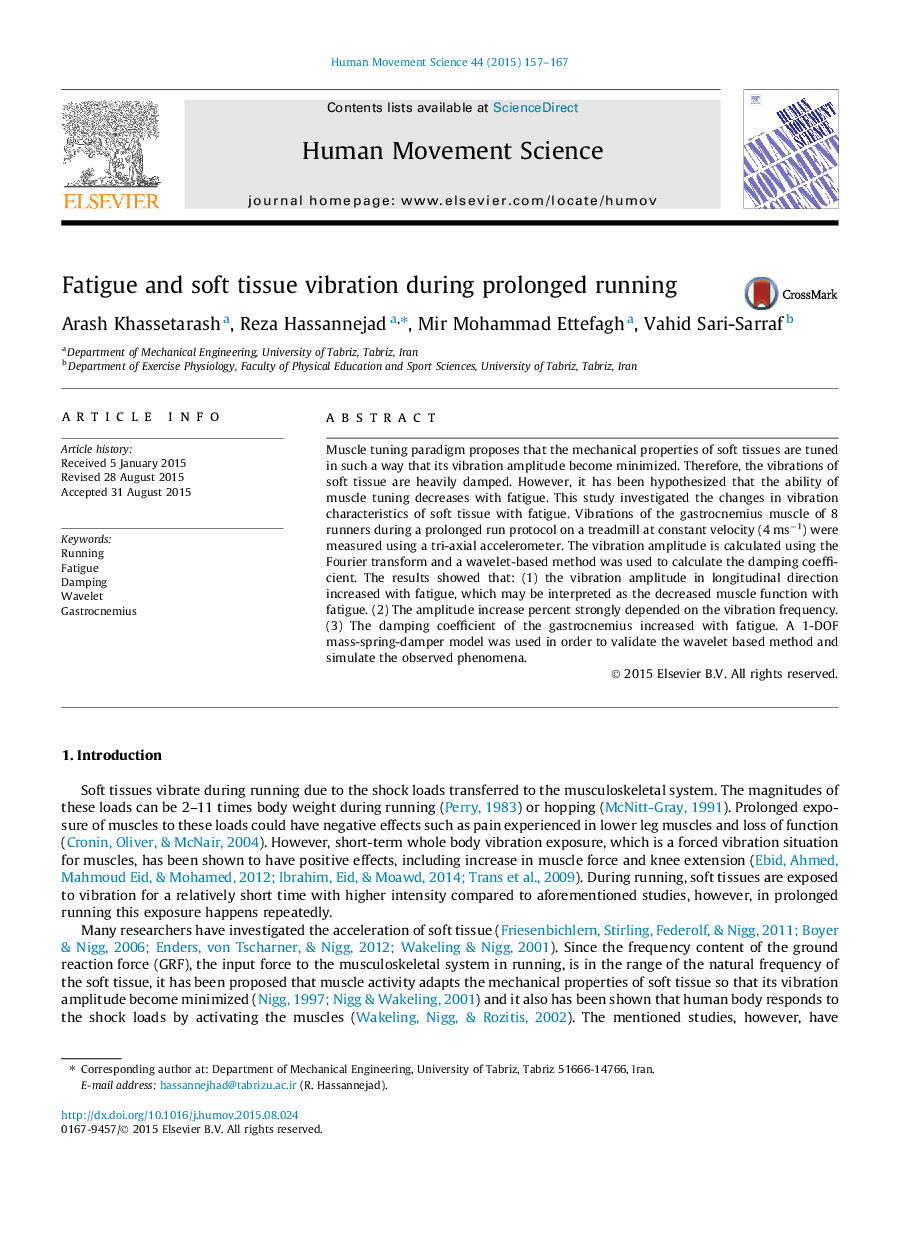| Article ID | Journal | Published Year | Pages | File Type |
|---|---|---|---|---|
| 7291800 | Human Movement Science | 2015 | 11 Pages |
Abstract
Muscle tuning paradigm proposes that the mechanical properties of soft tissues are tuned in such a way that its vibration amplitude become minimized. Therefore, the vibrations of soft tissue are heavily damped. However, it has been hypothesized that the ability of muscle tuning decreases with fatigue. This study investigated the changes in vibration characteristics of soft tissue with fatigue. Vibrations of the gastrocnemius muscle of 8 runners during a prolonged run protocol on a treadmill at constant velocity (4Â msâ1) were measured using a tri-axial accelerometer. The vibration amplitude is calculated using the Fourier transform and a wavelet-based method was used to calculate the damping coefficient. The results showed that: (1) the vibration amplitude in longitudinal direction increased with fatigue, which may be interpreted as the decreased muscle function with fatigue. (2) The amplitude increase percent strongly depended on the vibration frequency. (3) The damping coefficient of the gastrocnemius increased with fatigue. A 1-DOF mass-spring-damper model was used in order to validate the wavelet based method and simulate the observed phenomena.
Related Topics
Life Sciences
Neuroscience
Cognitive Neuroscience
Authors
Arash Khassetarash, Reza Hassannejad, Mir Mohammad Ettefagh, Vahid Sari-Sarraf,
